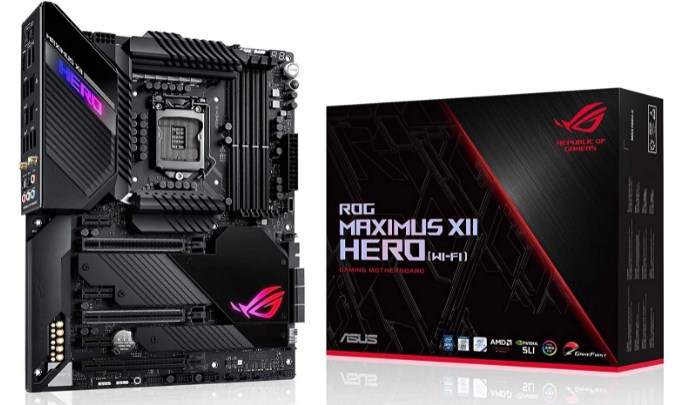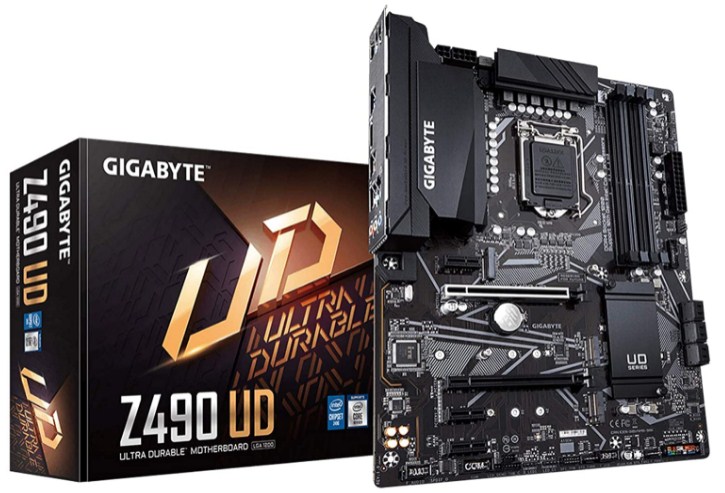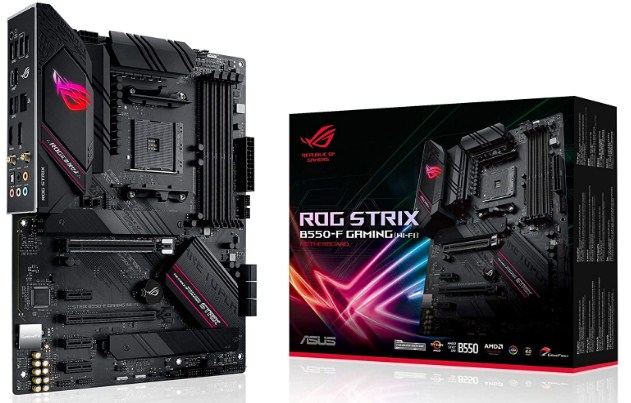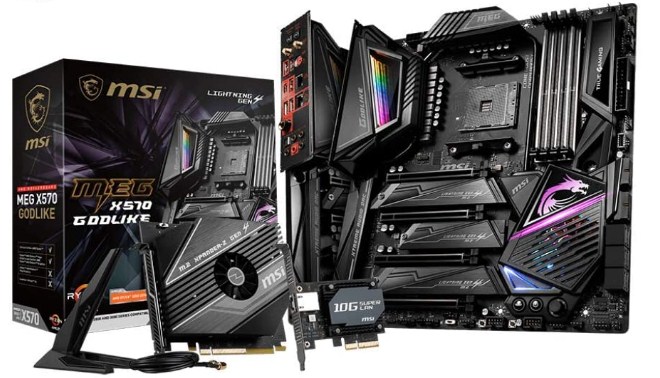Are you looking for the best Motherboards to edit in 4k because you are spending hours in front of your motherboard waiting for the rendering and export of your videos?
Or simply, do you want to find a guide to start your career as a 4k video editor and know what your best options are?
Do not worry! Although a motherboard for 4K video editing can be assembled from scratch or purchased from the factory , in this article we will explain all the points you should consider before making your purchase.
Starting with the general concepts of ‘4K video’, the characteristics that a motherboard must have to edit in 4K , advantages and disadvantages and much more. In addition, if you are a graphic designer, this motherboard guide will also help you to make a better choice.
Best 4k Video Editing Motherboard List:
So, if you are looking for the best motherboard for video editing in 2021, you are in the right place.
GIGABYTE B550 AORUS Elite
About this item
- Supports 3rd Gen AMD Ryzen Processors
- Dual channel non-ECC unbuffered DDR4, 4 DIMMs
- True 12+2 Phases Digital VRM Solution with 50A DrMOS
- Advanced thermal design with enlarged surface heatsinks
- Ultra-durable PCIe 4. 0 x16 slot
- Dual ultra-fast NVMe PCIe 4. 0/3. 0 x4 M. 2 with thermal guard
- AMP-UP audio with ALC1200 and WIMA capacitors
ASUS ROG Maximus XII Hero
About this item
- Triple level game acceleration accelerate game traffic With device, game packet and game server prioritization
- Cutting edge hardware offers the best performance 1.8 GigaHertz Quad Core cpu and 2.5 G gaming port for ultimate performance
- Your own gaming mesh network Compatible with ASUS AiMesh Wi Fi system for seamless whole home coverage.Memory:256 MB Flash,1 GB RAM
- Intel LGA 1200 socket: Designed to unleash the maximum performance of 10th Gen Intel Core processors
- Robust Power Solution: 14+2 power stages with ProCool II power connector, high-quality alloy chokes and durable capacitors to provide reliable power even when push the CPU performance to the limit
- Optimized Thermal Design: Except comprehensive heatsink, heatpipe and fan headers, features low-noise AI cooling to balance thermals and acoustics by reducing fan speeds and maintaining a 5 Celsius delta
GIGABYTE Z490 UD
About this item
- Supports 10th Gen Intel Core processors
- Direct 11+1 Phase Digital VRMs with DrMOS Stages
- Extended MOS Heatsink VRM Cooling
- Dual Channel Non-ECC Unbuffered DDR4, 4 DIMMs
- Realtek GbE LAN
- 2x M.2 slots
- AMP-UP AUDIO ALC887 Audio DAC
ASUS ROG Strix B550-F
About this item
- AMD AM4 Socket and PCIe 4. 0: The perfect pairing for Zen 3 Ryzen 5000 & 3rd Gen AMD Ryzen CPUs
- Robust Power Design: 12+2 DrMOS power stages with high-quality alloy chokes and durable capacitors provide reliable power for the last AMD high-count-core CPUs
- Optimized Thermal Solution: Fanless VRM and chipset heatsinks with ASUS Stack Cool 3+ design keep your system running reliably under heavy load by enhancing passive cooling capacity for critical onboard components.
- High-performance Gaming Networking: 2. 5 Gb LAN with ASUS LANGuard
- Best Gaming Connectivity: Supports HDMI 2. 1(4K@60HZ) and DisplayPort 1. 2 output, featuring dual M. 2 slots (NVMe SSD)—one with PCIe 4. 0 x4 connectivity, USB 3. 2 Gen 2 Type-C port and Thunderbolt 3 header
- Industry-leading Gaming Audio & AI Noise Cancelling Mic Technology: High fidelity audio from a SupremeFX S1220A codec with DTS Sound Unbound and Sonic Studio III draws you deeper into the action. Communicate clearly with ASUS AI Noise Cancelling Mic technology.
- Unmatched Personalization: ASUS-exclusive Aura Sync RGB lighting, including RGB headers and a Gen 2 addressable RGB header for greater customization
- Please ensure your BIOS is up to date if installing a compatible Ryzen 5000 series CPU. Visit ASUS site search by motherboard model name, click on “Support” tab, Drivers and Tools, then BIOS & Firmware to download the latest BIOS.
MSI MEG Godlike
About this item
- Supports up to 128GB dual-channel DDR4-SDRAM memory
- Extended ATX form factor
- Chipset: Intel Z490
- Socket type: LGA 1200
- Ports: 2 x USB3.2 Gen 2 Type-A, 2 x Ethernet LAN RJ-45, 2 x WiFi-AP antenna jack, 4 x USB3.2 Gen 1 Type-A, 2 x USB2.0
4K Editing: Ultra High Definition Video
If you have recently been researching a motherboard for video editing, it is becoming more and more common to see the term ‘4K video’ in internet advertisements, or pasted on store screens and even written on the labels on the front of the ‘tech products’.
But what do manufacturers mean by ‘4K video’?
If you’re just getting interested in ‘4K video’ technology, this term is simply a video specification that literally just means ‘4,000’ and gets its name from the roughly 4,000 pixels wide of video footage.
I mean, in terms of image, it’s much more detailed than anything you’ve probably seen before. You may have already noticed the leap from ‘standard definition’ pre-digital television to ‘HD’ and ‘Full HD’ services that are now available on digital television, online broadcasts, and Blu-Ray discs.
Compared to previous standards, HD footage is detailed, sharp, and even looks good when viewed on a large TV. But even at the best quality, ‘1080p’ HD footage is only 1920 pixels wide.
The ‘4K video’ is significantly more detailed, having twice the pixels horizontally and four times as many pixels overall.
As we know, technology does not stand still, so the new thing in video standards that has been being handled in professional productions is ‘4K video’.
The term 4K is used to describe a couple of different, albeit very similar, standards. The way you’ll probably find them will be as Ultra High Definition or UHD (Ultra High Definition), the new standard for 4K television.
Consequently, ‘4K video’ is the new benchmark for video recording and editing today, delivering a host of benefits in image clarity and efficiency.
Requirements to edit 4K videos
In itself, video editing in general already requires that a motherboard have some special features, which can even be increased if we are going to work with high resolutions . Therefore, it is important to know the requirements for editing 4K videos.
Processor
Also called CPU, this is one of the parts that you should pay attention to the most if you are looking for a good motherboard to edit 4K videos. As we mentioned, editing videos in high resolution requires, above all, fluency, since we will need it for the rendering and export of our work.
In this way, when choosing a processor for 4K video editing, two important aspects must be taken into account:
- Number of cores: For best performance, a 4K video editing motherboard should have a minimum of 8 cores.
- Frequency rate: Ideally, a 4K video editing motherboard should be clocked at a minimum of 3.6 GHz.
Now, it must be taken into account that the higher the nucleus the lower the frequency . Therefore, the ideal on a motherboard for 4K video editing is to achieve a good balance.
On the other hand, you must take into account the types of source files, the codec (which allows compressing and decompressing digital video) and the video resolution will affect the speed at which you can edit, play, render and export your ‘4K video’ finished from your motherboard.
Clips taken from your camera will likely be in a compressed format and will need to be decompressed to a full color raw depth format before you can process all of your final video editing.
All these tasks place a great load on both the CPU and the GPU (Graphics Processing Unit). So choosing the processor for video editing is really about choosing the balance between the GPU and the CPU.
Graphic card
While many might think that a 4K video editing motherboard needs a good graphics card above all else, this element is less important than a good processor. Now, that does not mean that a graphics card for 4K video editing is not a vital component.
A 4 GB 4K video editing graphics card is mid-range, which might be enough to get the job done. However, if you want a better performance, the ideal is for it to be higher than this number .
If you are going to edit on a PC, you have many more options to choose the graphics card. The only thing you would have to take into account would be the workflow that your PC will have and, of course, the budget issue.
While many evaluate the CPU performance of a video editing system by disabling graphics card or GPU acceleration, this gives an inaccurate result.
When you disable GPU acceleration, the entire workload is handled by the CPU and multi-core processors show great performance improvements.
Instead, when graphics card acceleration is enabled, the motherboard will, when possible, place complex multi-threaded calculations on the GPU and CPU as well.
In this scenario, it’s important to strike the right balance (as we mentioned earlier) between CPU, GPU, and memory performance for better PC performance when editing in 4K.
For example, the Ryzen 9 3900X and Ryzen 9 3950X are high-end AMD CPUs that offer excellent performance in both video games and ‘4K video’ editing and other creative applications.
RAM
In the RAM memory of a motherboard for 4K video editing, all the data that you use in each modification will be temporarily stored. There is not enough memory, since everything will depend on the length and depth of your videos. Speaking of data, we take the opportunity to tell you how a database works in the cloud .
A motherboard for 4K video editing must have a RAM memory of at least 32 GB, and it is recommended that it be in two modules; that is, if we install 32 GB it will be better to have two 16 GB modules.
Another consideration you should have is the number of PCIe lanes and the maximum memory supported by the processor.
Low-end processors only support 16 PCIe lanes and a maximum of 64 GB of memory. This is fine for low and mid-range systems that only use one GPU, but higher performance systems that require multiple GPUs for gaming and 4K video editing will be limited by the number of PCIe lanes.
The maximum memory of 64 GB will limit those who work with higher resolutions. It’s also worth noting the fact that high-end processors target memory on four channels, but low-end models only use two channels. This can have a small but noticeable impact on your PC’s performance for 4K editing.







